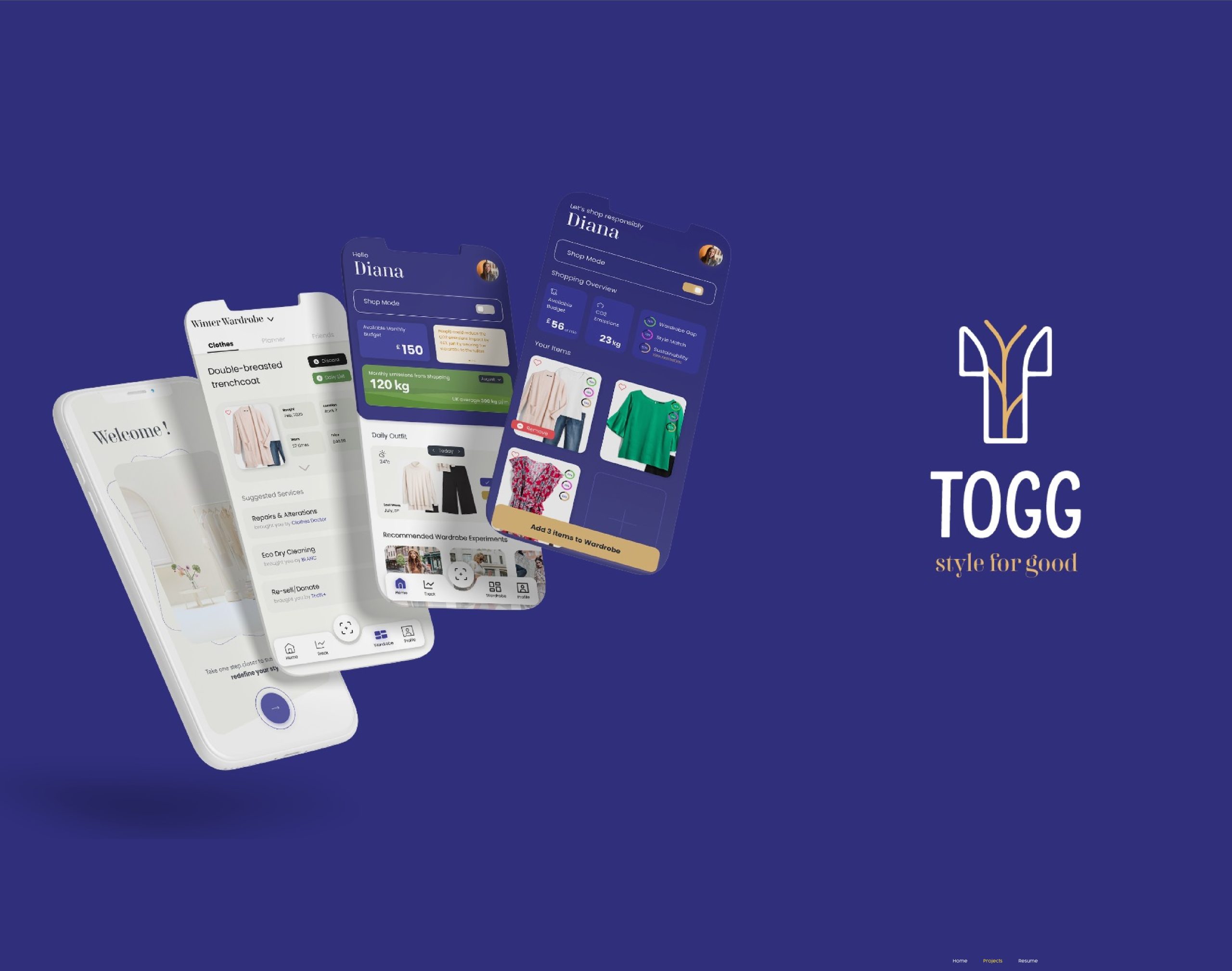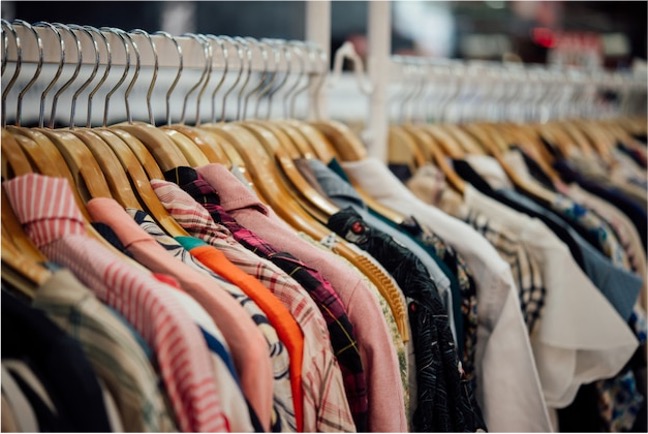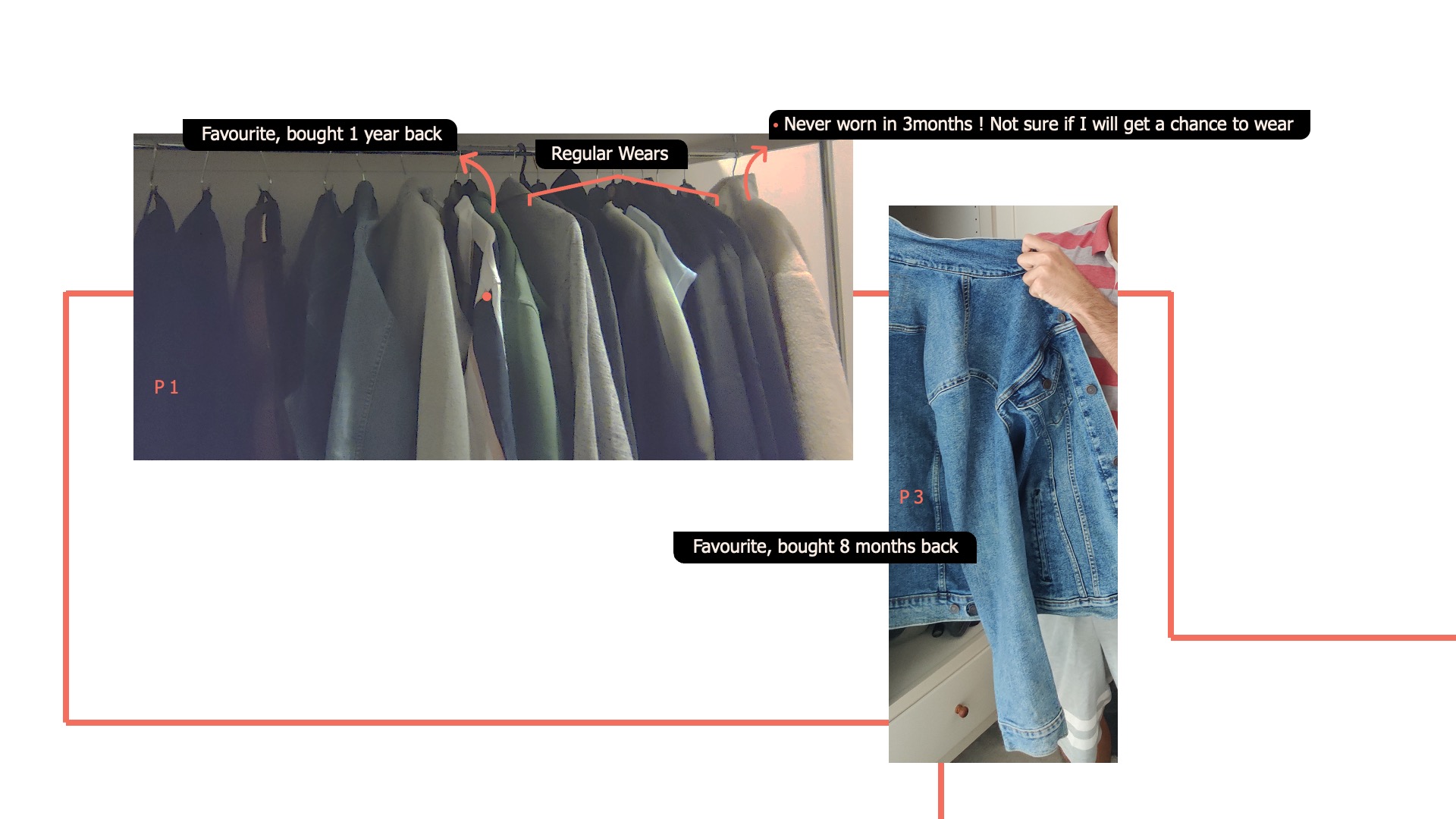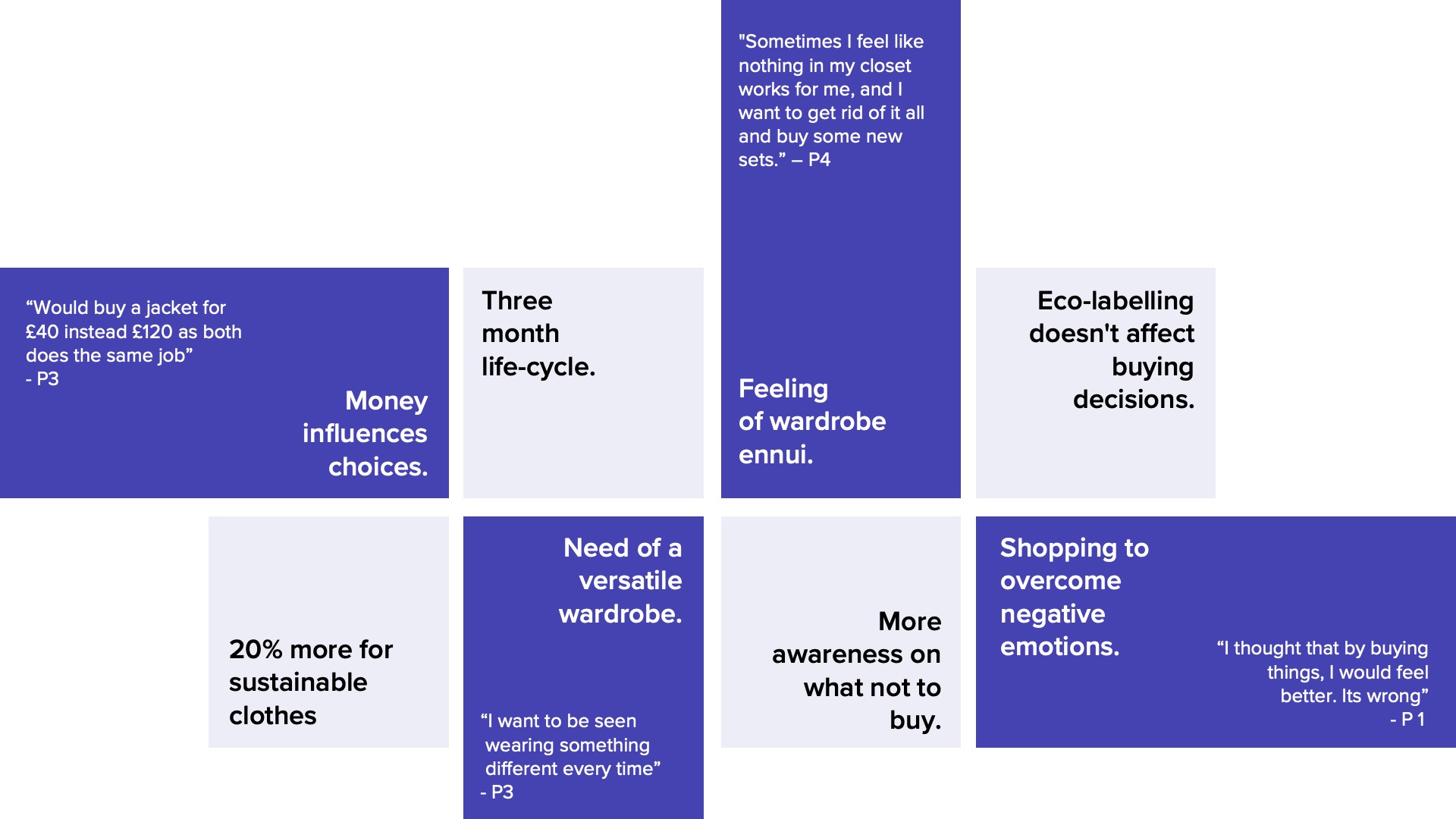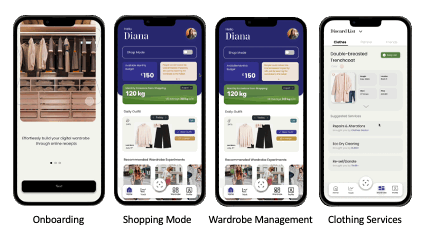A designer on a mission to create thoughtful & meaningful experiences and believes in minimalism to orient our focus to what matters.
Major project
Togg
TOGG is your personalised virtual stylist with a mission to make you buy less, buy better and efficiently use the most of your wardrobe.
A study by onepoll.com tells that the average woman in UK spends 8 years of her lifetime on shopping, around 16 kg of clothing per year over a period of 63 years. And 2 years on deciding what to wear. Even after spending of a lifetime on 10 years on clothes, people wear only 50% of their wardrobe and £140 million in wearable clothes are thrown away in the UK. With the world's population predicted to reach 9 billion by 2050, finding solutions that minimise the environmental damage caused by the existing fashion shopping model is paramount.
The Challenge
An average UK consumer buys 16kg of garments each year. At the same time, these clothes are kept only half as long as they were a mere fifteen years ago. Nearly #140 million worth of wearable clothes are thrown away, which is close to 30% of clothes people buy are minimally used and thrown away.
User Research
The data collection was focused on 2 main questions, the first one is why people buy new clothing regularly and what it means to them, for consumers using survey and semi-structured interview methods.
The second question is about the possibilities of fashion brands to influence consumers to make sustainable decisions, for stakeholders using focus group and interview methods.
Findings & Insights
Starting with Data Analysis, I used affinity diagramming as I was able to see patterns in attitudes and behaviours during the participant interactions. Then I created a persona defining the user group from the identified goals, pains and barriers and did an experience map for the persona to find gaps in experience and to focus on the opportunity space.
Money obviously highly influences the choices, users are able to get a jacket for £40, why would they spend £120?
Feeling of wardrobe ennui, which is dissatisfaction with the clothes and a desire to buy fresh sets.
Shopping to feel good emotionally, overcome negativities and people want a versatile wardrobe like to wear something different every time.
These are some of the key factors due to which people buy clothes which are not much of use for them. When reducing new clothing production is a priority for achieving sustainability, consuming unwanted clothes indirectly conveys demand for fashion and hence more production. Apart from this, according to this study eco-labelling has a very low impact on buying decisions, and people are ok with paying up to 20% more for sustainable fashion.
Stakeholders emphasized consumer empowerment, like the need to bring back the older days when people saw buying clothing was seen as an investment, not as a leisure activity.
Entrepreneurs said about lack of physical and emotional durability in clothing, where physical durability resists wear and damage, emotional durability resists our natural tendency to want the next new thing by setting up a positive association with the clothing.
The idea itself was thought-provoking for the project and after some secondary research on it I went back to a few of the users’ wardrobe analyses, I self-reflected and spoke to a few participants, for ex, asked about the clothing they bought along with these favourites, I came to know that for various reasons the other clothes are not been used and maintained as these ones and they regret buying it.
Ideation & Co-design
Phase 2 of double diamond was a 3-stage continuous iterative process that resulted in the final design outcome. HMWs and what ifs methods were used to identify opportunities and explored the problem and user requirements. Then extracted key opportunities and brainstormed concepts and held co-design sessions with both designer and non-designer groups to evaluate and iterate concepts & features together. Additionally, competitor analysis was also done to understand the current trends.
As I’m kind of tech-savvy person I started exploring futuristic concepts like digitization venture which is on-demand production based, a VR/AR, NFT concept a digital shopping has possibilities to reduce regular shopping urge. One is about merging fashion and fintech and subscription services. It was more of going back and forth until it led to a convincing idea of personalised virtual stylist. The crazy 8 method was used to ideate features for the concept. I did it twice before and after visiting Fjord trend 2022. And brainstormed a diverse list of 16 features. and decided to validate with users.
Prototype
Started with mapping out the journeys and the information architecture after a quick user validation, then low & mid-fidelity wireframes were created to test & iterate with users at every stage. To check the flow and add/remove/ shift screens in the flow, I did a cardboard phone where wireframes could be slid through, for quick prototyping.
First by bodystorming the scenario myself and later with a participant from the target user group.
There was a need for additional screens to provide clarity and edit the user flow accordingly.
Final Outcome - TOGG - Style for Good
TOGG is your personalised virtual stylist with a mission to make you buy less, buy better and efficiently use the most of your wardrobe. The key features include Personalised Shopping Assistance, Smart Wardrobe Management, and Sustainable Clothing Services.
Users benefit from Personalized styling aid efficiently, maximizing existing outfit use while consuming less fashion.
How it works
Onboarding has 3 main purposes for data collection. setting up Digital Wardrobe through capturing online receipts in the linked email with the help of computer vision (AI). The shopping assistance works on 3 main criteria, wardrobe goals, style match, and sustainability goals.
A new item will have a low score if it's very similar to existing items in the wardrobe, doesn’t match with personal style or if it’s not sustainably produced. The smart wardrobe management can offer the user to have multiple number of lists digitally to keep clothes sorted.
There is a calendar option to sync user’s schedule and link up google/apple calendars and enable the user to plan the outfit for the event
A fun social element is being able to check your friends' wardrobes, can recommend, like, and save outfits.
Users can use our ecosystem of services to resell/donate, repair/alternate and eco-dry cleaning to extend the lifetime of the clothes sustainably from the carefully curated partners
Vignesh Kumar
Major project
Togg
Work Experience
I started my career in 2018 as an in-house graphic designer at a Fintech startup called Monexo where I was responsible for all of our design needs, which ranged from branding all the way to product design. I worked alongside with the CEO & CTO.
Then switched to an e-learning agency, Origin Learning, where I got the opportunity to work on motion graphics projects using After Effects and Illustrator with leading US companies like VM ware, Mulesoft, Baker Hughes, Automation Anywhere.
Then I joined Deloitte as a Graphic & Motion Designer, my main responsibility was to deliver high-end design and animations for Tax Clients around the world.
With the three years of work experience and my master's course so far, I've learnt how to apply my ideas to solve real-world problems and design easier lives for others.
